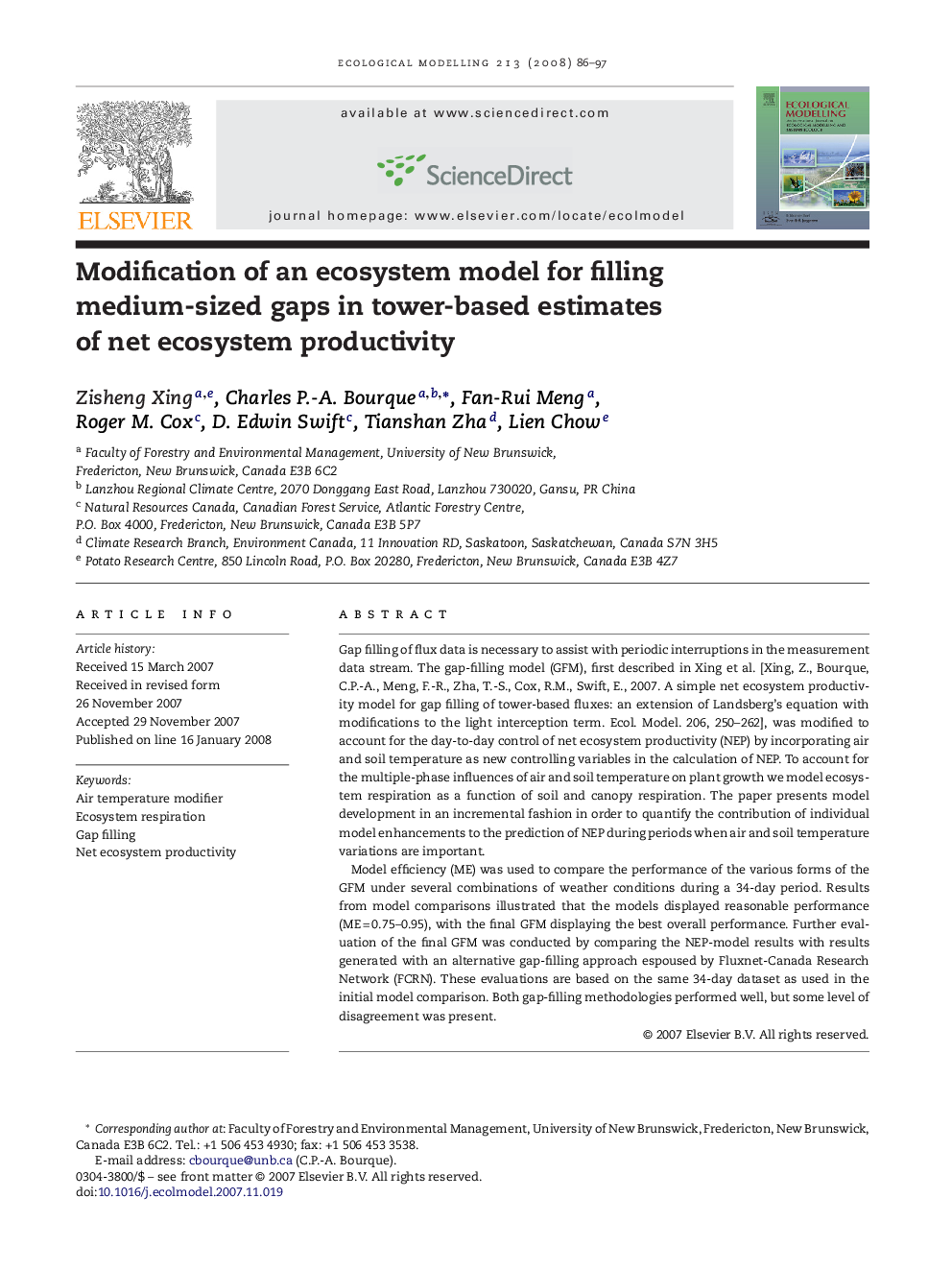| Article ID | Journal | Published Year | Pages | File Type |
|---|---|---|---|---|
| 4377876 | Ecological Modelling | 2008 | 12 Pages |
Gap filling of flux data is necessary to assist with periodic interruptions in the measurement data stream. The gap-filling model (GFM), first described in Xing et al. [Xing, Z., Bourque, C.P.-A., Meng, F.-R., Zha, T.-S., Cox, R.M., Swift, E., 2007. A simple net ecosystem productivity model for gap filling of tower-based fluxes: an extension of Landsberg's equation with modifications to the light interception term. Ecol. Model. 206, 250–262], was modified to account for the day-to-day control of net ecosystem productivity (NEP) by incorporating air and soil temperature as new controlling variables in the calculation of NEP. To account for the multiple-phase influences of air and soil temperature on plant growth we model ecosystem respiration as a function of soil and canopy respiration. The paper presents model development in an incremental fashion in order to quantify the contribution of individual model enhancements to the prediction of NEP during periods when air and soil temperature variations are important.Model efficiency (ME) was used to compare the performance of the various forms of the GFM under several combinations of weather conditions during a 34-day period. Results from model comparisons illustrated that the models displayed reasonable performance (ME = 0.75–0.95), with the final GFM displaying the best overall performance. Further evaluation of the final GFM was conducted by comparing the NEP-model results with results generated with an alternative gap-filling approach espoused by Fluxnet-Canada Research Network (FCRN). These evaluations are based on the same 34-day dataset as used in the initial model comparison. Both gap-filling methodologies performed well, but some level of disagreement was present.
